Below is an article written by Ron Leavitt, AUD which was published in American Academy of Audiology as part of their March/April 2025, volume 37, number 2, Audiology Today issue. Clicking the link below will download Ron’s article.
Ron Leavitt featured on the informative podcast “Listen Up”
Recently Dr. Ron Leavitt was on “Listen Up” an informative podcast by the Arizona Hearing Center and hosted by Mark J Syms, MD. The podcast seeks to educate the public on the necessity of taking care of one’s hearing. Below is a link to the podcast video:
Dr. Ron Leavitt – Hearing Health and Comprehensive Auditory Rehabilitation
Recently Dr. Ron Leavitt was on “Listen Up” an informative podcast by the Arizona Hearing Center and hosted by Mark J Syms, MD. The podcast seeks to educate the public on the necessity of taking care of one’s hearing. Below is a link to the podcast video:
Pathways Interview with Dr Ron Leavitt
Below is a link were Dr. Ron Leavitt was interviewed by Dr. Frank Musiek about both his early career and the current state of hearing aids
Pathways Interview with Ron Leavitt, Director, Corvallis Hearing Center, Corvallis, Oregon
Hearing Loss Hearing Aids and Brain Health
Below is a recording of Dr. Leavitt and his clinicians giving a speech on the importance of proper hearing aid fitting and brain health:
American Academy of Audiology Conference 2023
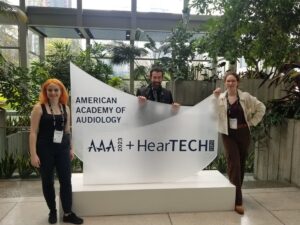 Dr. Ron Leavitt and his assistants Holly and Andrea at the American Academy of Audiology Conference 2023
Dr. Ron Leavitt and his assistants Holly and Andrea at the American Academy of Audiology Conference 2023
Hearing Difficulty?
Hearing Difficulty?
It’s Important to Know the Business You Are In
Dr. Ron Leavitt, Audiologist
A noted entrepreneur once said “It is important to know what business you are actually in.” In recent years this quote has taken on new meaning for hearing health care providers.
In the past some audiologists may have thought we were in the hearing aid sales business. Then cochlear implants came along and that view was broadened to include a more encompassing term such as the “hearing improvement business” since hearing aids were no longer the only tool in the toolbox.
Today hearing health care providers are faced with a mountain of data suggesting we are in the cognitive optimization business.
Specifically, it is now known that when hearing loss is untreated or improperly treated, a host of anatomical and physiological changes occur in the brain that result in a phenomenon known as “synaptic pruning and resource reallocation.”
While synaptic pruning is used by the healthy brain to minimize those pathways that are nonessential to existence, when hearing loss is improperly treated synaptic pruning and reorganization takes place in critical areas of the brain associated with higher order reasoning. Such unfavorable reorganization/pruning may be a gateway to dementia whose strong relationship to hearing loss has been well documented.
The obvious question then becomes what should we be doing to prevent such an outcome? First, when friends, family or colleagues start saying you are having hearing problems act immediately to get a comprehensive hearing test. There is likely a point of no return where the brain is too improperly pruned/reallocated to recover (see https://corvallishearing.com/1feb2021 for more in-depth discussion).
Next, every hearing aid and cochlear implant must be programmed so as to provide audibility of the greatest number of speech sounds possible within the limitations of the individual’s hearing loss. Unfortunately, such programming rarely occurs (see https://corvallishearing.com/2feb2021 or https://corvallishearing.com/3feb2021 or https://corvallishearing.com/4feb2021 for more in depth explanation).
Next, you must work to maintain optimized hearing of speech sounds. Such maintenance entails annual hearing and hearing aid/cochlear implant checkups. Hearing rarely gets better over time and some causes of hearing loss result in a fairly rapid degradation of hearing in a relatively short time frame. As such, hearing aid reprogramming may be necessary on an annual basis or sooner.
Additionally, hearing aid and cochlear implant performance may degrade over time, particularly when used in high humidity or dusty/polluted environments or worn with excessive amounts of hair spray.
Finally, we must all take some initiative to stay physically active and eat well as contemporary research has shown both are critical areas of intervention in cognitive optimization for both children and adults (see https://corvallishearing.com/5feb2021 and https://corvallishearing.com/6feb2021 and https://corvallishearing.com/7feb2021 and https://corvallishearing.com/8feb2021 for more info).
For anyone interested in more information on this topic we will be presenting this information at our next “virtual” Better Listening Seminar and on our website in the near future. For more info call (541) 754-1377.
Hearing Loss and the Brain
Frequent readers of this section are well aware that hearing loss changes the brain in ways that foster dementia. Those who have missed this news are referred to the following article (https://corvallishearing.com/hldementia)
Unfortunately, recent information suggests that well before dementia sets in there are a large series of changes that take place that make the brain function in abnormal ways (https://corvallishearing.com/congenital-deafness).
These new findings use radiographic techniques to show the numerous essential inter connections that exist between the primary and secondary auditory areas of the brain and all other parts.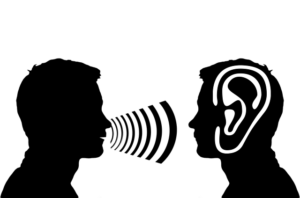
These brain interconnections must be functional for people to completely comprehend spoken or written language or even maintain appropriate social behavior. To quote Dr. Kral and his colleagues, “The experienced adult brain relies on higher-order representations for generating expectations about the environment based on the context and behavioral goals. These expectations are possible since the brain has developed a meaningful representation of the world (sensory information) that is constantly updated and compared with external events. With the mature micro circuitry the auditory (area of the brain) can integrate bottom-up and top-down (sensory and intellectual) information flow. In cases of conflict between the input (from the senses) and these (memory) expectations, error signals drive plastic changes and learning. These processes require experience and a functional interareal (whole brain) and intrinsic (brain) circuitry.”
Stated differently, looking only at the auditory area of the brain is missing the point.
Knowledge of the critical importance of these inter connections brings us to an obvious question: What should we be doing to foster interconnected brain health?
Fortunately, we have research that addresses this intervention question.
First, there must be a foundation that allows for hearing the maximum number of speech sounds in individuals with hearing loss (https://corvallishearing.com/audibility).
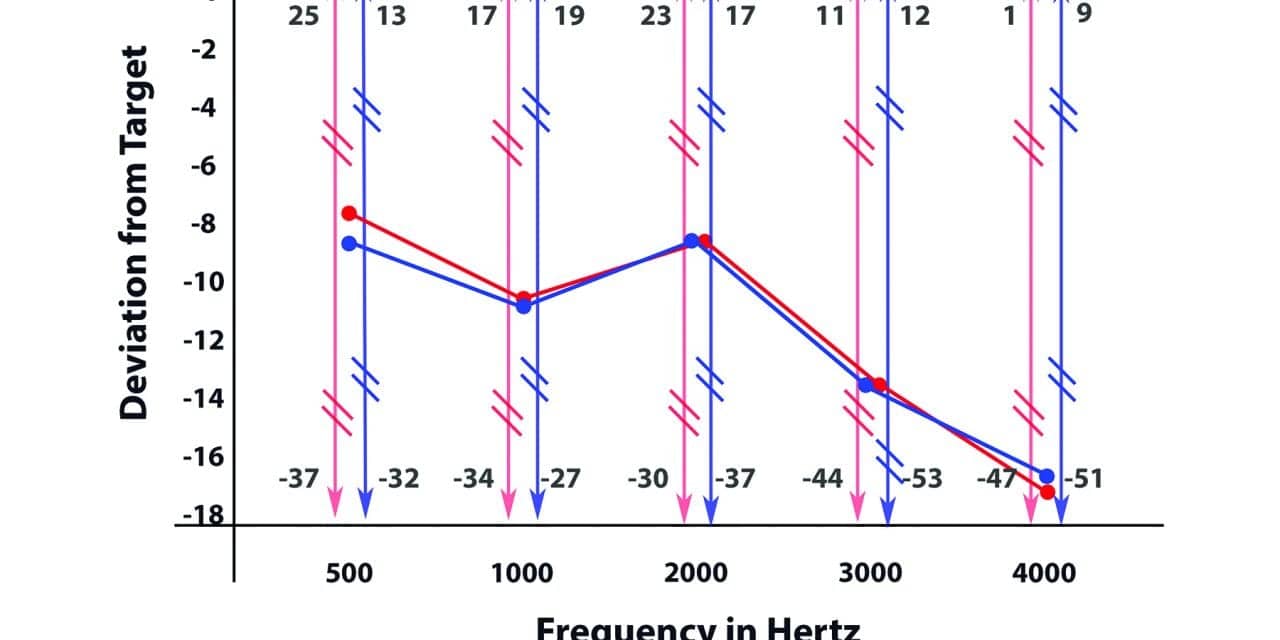
Depending on the level of hearing loss, this first rule mandates use of hearing aids or cochlear implants long before hearing loss becomes chronic. Again quoting Dr. Kral and colleagues, “changes (due to hearing loss) in columnar microcircuits (deep and superficial brain connections) and interareal couplings (connections within the larger parts of the brain) limit the outcome of sensory restoration (hearing aids and/or cochlear implants) if performed late in life.
Stated differently, there is a point of no return. The body is a habitual machine and if you let it develop bad physiological habits (untreated hearing loss) for a long period of time, these bad habits cannot be undone.
However simply obtaining timely hearing aids or cochlear implants is not enough. These devices must be properly programmed and most are not (https://corvallishearing.com/oregon-fitting-errors)
Secondly as noted by Kral and colleagues, the individual must maintain brain stimulating, language-rich social contacts. (Use it or lose it).
To summarize, a healthy brain requires maximum audibility of speech sounds and intellectually stimulating use of those audible words.
For more in-depth discussion of this issue the reader is referred to the following summary (https://corvallishearing.com/entrain-brain).
Hearing Aids for People with Normal Hearing?
Much research has focused on patients who self-report listening difficulties, but show normal results on the typical pure tone hearing test where you raise your hand, push a button or say “yes” when you hear the tone.
In fact, it is estimated some 26 million people in the U.S. self-report listening difficulties with normal pure tone results (see https://corvallishearing.com/hearing-difficulties for references ).
This 26 million figure would account for nearly 70% of the 37.5 million people in the U.S. who have suspected listening difficulties per the National Institutes of Health estimate.
The literature notes there are a number of auditory disorders that may not produce hearing loss as measured by pure tone testing. These disorders include Central Auditory Processing Deficit, Auditory Neuropathy Spectrum Disorder, Cochlear Synaptosis, Hyperacusis and tinnitus to name a few.
It is not surprising then that pure tone testing popularized in the early 1940s does not address these more recently-identified auditory maladies.
In a previous article we noted several other tests are often more diagnostically revealing for the disorders listed above. However, the question for most patients so afflicted with any of these disorders is “What can be done to treat it.”
Unfortunately, the treatment of these disorders is less clear cut than the diagnostic tests used to identify them.
In a recent article Humes (2020) made the case for use of hearing aids with many such patients who show normal pure tone test results (see https://corvallishearing.com/normal-hearing).
In the case of tinnitus (the perception of ringing, buzzing, whooshing sound or music when no sound is actually present) the hearing aid recommendation is often supported. Research has shown oftentimes the brain is essentially turning up the volume looking for sounds that are no longer as loud as they once were before the individual experienced tinnitus. Thus, hearing aids can amplify these slightly less loud sounds back to their original volume and the perception of tinnitus in as many as 60% of patients is improved.
In the case of Hyperacusis (heightened sensitivity to sound, with aversive or pained reactions to normally-loud environmental sounds) this disorder is thought to result from the brain’s loudness mediating function being set at too low a volume. As such one recommended treatment is gradual introduction of more sound oftentimes from a very low-volume hearing aid combined with counseling to calm an apprehensive patient who is already concerned about too much sound. (see https://corvallishearing.com/tinnitus for discussion).
By contrast in 260 patients with Auditory Neuropathy Spectrum Disorder, 61% of patients reported little or no hearing aid benefit (see https://corvallishearing.com/auditory-neuropathy).
In short, successful use of hearing aids among patients self-reporting listening difficulties with normal pure tone results depends heavily on the correct diagnosis. To quote Ghandi “A correct diagnosis is three-fourths the remedy.” It is then imperative that in-depth testing beyond the conventional pure tone examination be completed before any hearing aid recommendation is made for such patients.
American Academy of Audiology 2020 Presentation
The international American Academy of Audiology conference for 2020 was cancelled due to COVID-19. However, they invited us to do a 90 second video on our scheduled presentation. This is our video of our session.
November 2019 Seminar
Brain Resource Preservation & Hearing Aids
This week Ron Leavitt, Au.D and Carol Flexer, Ph.D are presenting our research findings at the International Conference of the American Speech Language and Hearing Association in Orlando, Florida.
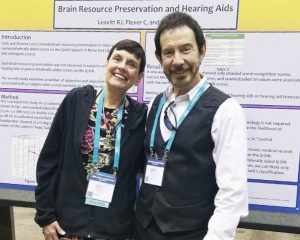
Hearing Loss and Falls
Falls are pervasive among people over age 65 in this country. Making this problem worse, the incidence of falls among people with hearing loss are three times greater than those with normal hearing when other risk factors are equated.
The Center for Disease Control reports that every second an older person in this country falls, making falls the number one cause of accidental injury and death in people over age 65.
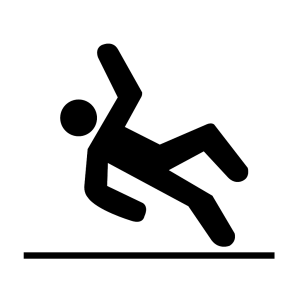
In 2014 alone, older Americans experienced 29 million falls causing seven million injuries and costing an estimated $31 billion in annual Medicare costs, according to a new report published by the Centers for Disease Control.
In addition, falls are the number one cause of traumatic brain injury in this country affecting 5.3 million who routinely suffer cognitive and physical impairments for months or years after the injury. Further, traumatic brain injury has been positively associated with epilepsy, Parkinson’s and Alzheimer’s disease which often signal an end of an individual’s independence.
In an attempt to stem the tide of frequent falls in the elderly the Mayo Clinic group has offered the following advice:
- Discuss any fall you have with your doctor and have your medications checked for those which may be contributing to poor balance.
- Engage in physical activity such as walking to strengthen your legs and improve your balance.
- Wear sensible shoes to maintain better balance. High heels and socking feet are not recommended.
- Remove tripping hazards from the house such as loose rugs, loose wiring, phone cords, extension cords, immediately cleanup all water and oil spills when they occur and use rubber mats in the bathtub/shower with grab bars.
- Light up your living space with night lights in all walkways and a lamp near your bed. Use high illumination bulbs all over the house.
- Use handrails on both sides of all stairways and use nonslip surface on all wooden stairs. Occupational therapist can assist you in making your house fall proof.
In addition to these recommendations noted above, we are highlighting important strategies for fall prevention that go beyond those provided by the Mayo Clinic group. Join us at 2:30 to 4 PM on November 14th at Corvallis Good Samaritan Hospital Conference Room B where we will be offering a fall prevention workshop. The public is invited. No personal information will be taken, and free refreshments will be served.
At this November 14th meeting active people in their 70s, 80s and 90s will be discussing the strategies they have used to remain physically active, free of frailty and free of falls for years. In addition, our new book on Lifetime Physical Fitness will be made available to workshop participants for a nominal fee as frailty is highly associated with falls in contemporary research.
If you or a loved one are at risk for falls this conference is for you. For further information, contact Corvallis Hearing Center at 541- 754-1377.
iOS 13 and Your Resound Hearing Aids
Did you recently update your iPhone to iOS 13?
Since the launch of iOS 13, 13.1, 13.1.2 and 13.1.3 Resound has been diligently testing with ReSound MFi® hearing aids.
The testing confirms that iOS 13 platforms are compatible with ReSound MFi hearing aids. However, there are some iPhone and iOS related issues which may impact patients. Download the ReSound Tech Tip to troubleshoot your iPhone if you are experiencing these defects.
To pair your hearing aids to back to your iPhone go to Apple’s support page.
If you’re still having trouble with your iPhone Call us today (541) 754-1377 and we will schedule an appointment to further troubleshoot your iPhone and hearing aids.
Hearing Loss and the Brain: A Story of Evolution
At times, medical knowledge moves forward in leaps and bounds. At other times such knowledge moves forward in a more gradual fashion. Such has been the case with our knowledge of the effects of hearing loss on the brain.
Seven years ago, Dr. Frank Lin of Johns Hopkins Medical University reported that hearing loss was highly associated with dementia and accelerated brain shrinkage. At that time, our medical knowledge on this topic took a giant step forward.
Since that report, our understanding of this relationship has been more evolutionary. For example, Drs. Glick and Sharma showed that untreated and poorly treated hearing loss results in a scrambling of brain resources.
These researchers showed improperly treated hearing loss results in inappropriate use of the frontal and prefrontal areas of the brain. Typically, these two areas of the brain are associated with memory and reasoning. However, in the case of poorly treated hearing loss, these two brain areas are used for understanding speech, lending credence to Dr. Lin’s hypothesis that hearing loss may overwork the memory and reasoning areas of the brain.
On a positive note, Glick and Sharma showed that properly fit hearing aids may reset the brain so that the auditory area is once again used for listening. Now the frontal and prefrontal brain areas can resume their normal functions.
More recently, it was discovered that hearing loss upsets the normal rhythmic pulses and interconnections the brain uses to communicate among its different functional areas.
Within the last few months, two separate reports out of Boston and Northwestern Universities showed reestablishing appropriate pulse rates among these different areas of the brain results in significant memory improvements in older people.
These studies, when considered together, suggest the possibility that properly treated hearing loss with hearing aids, perhaps combined with brain pulse resetting, may combat the devastating effects hearing loss may have on memory.
Currently, several large-scale studies are under way, examining the potential therapeutic benefit of properly fit hearing aids and brain pulse resetting on memory. In the interim, it appears medically prudent to treat hearing loss sooner rather than later, as the average delay between diagnosis of hearing loss and treatment has recently been reported to be nine years. It is no longer appropriate to view hearing loss as an inconvenience that can be ignored.
At our clinic, we are currently reviewing the records of 51 patients who have normal aided scores on the same speech in noise test shown by Glick and Sharma to signal brain resource preservation in hopes of identifying those therapeutic steps that can properly reset the brain.
Those interested in obtaining further information on this topic are invited to the monthly meeting of the Oregon Association for Better Hearing at Corvallis Good Samaritan Hospital, Conference Room B on the second Thursday of every month from 3:30 to 5:00 p.m.
Click Here for the Upcoming Seminar Information
Finding Your Balance
It is estimated that 3.3 million U.S. children suffer from some degree of balance problems (Li, Hoffman, Ward et al, 2016). Further Lin and Bhattacharyya (2012) estimate that one in five elderly persons experiences annual problems with dizziness or balance. Based on these statistics it is little wonder that falls are a significant cause of accidental death in persons over age 65.
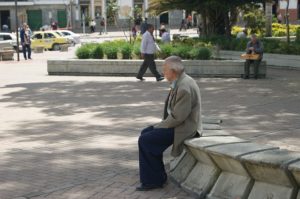
Unfortunately the facilities that specialize in balance disorders and balance therapy are few and far between. Those of us living in Oregon are fortunate to have a comprehensive balance diagnostic and therapy clinic as near as Portland. This facility known as the Clinical Audiology and Vestibular Laboratory recently underwent a million dollar equipment update.

The tests offered at this facility extend far beyond the basic caloric and Rhomberg tests offered at many other facilities. These tests include the following:
- Electronystagmography and Dix-Hallpike (ENG/HP and VNG/HP)
- Oculomotor test
- Positionals
- Hallpikes for identifying positional vertigo (BPPV)
- Caloric test
- Rotary chair vestibulo-ocular reflex
- Special rotation studies
- Computerized Dynamic Posturography (CDP)
- VNG pressure/Tullio test
- Vestibular evoked myogenic potential (VEMP)
- Electrocochleography
- Auditory brainstem response (ABR)/N. VIII studies
- Frequency-specific threshold (latency/intensity) ABR
- Otoacoustic emissions (OAE)
- Tinnitus evaluations
The benefit of these tests is that they are able to identify the numerous causes of balance disorders stemming from all parts of the peripheral balance system and can also help differentiate those balance disorders in the higher (central) balance centers. In addition, the hospital has an MRI facility that assists in identification of space occupying lesions of the balance system. Taken in sum this single facility offers most of the tests currently recommended by the American Academy of Audiology for facilities of excellence.
Over the past 20+ years we have referred numerous patients to this facility to gain more insight into the cause of each patient’s balance problems and to seek viable therapies to mitigate these balance problems.
Ask us about your balance issue and let’s get to the bottom of it! Contact our office and schedule an appointment!
Contact Us!
School Days are on their way!
Fall sports team have started their practices, teachers have gotten back into their classrooms and stores have lined their shelves with school supplies! Yes, it is truly that time of year again. We may not be quite ready for apple cinnamon candles or pumpkin spice lattes yet but the tug for school shopping has definitely begun!

We know this time of year can be stressful but we hope to take some of that stress away! Here are the links for Corvallis School District and Greater Albany Public Schools along with some resources to get you going in the right direction for school shopping.
Corvallis School District
Greater Albany Public Schools

Here are some local and online resources for school supplies! Weather you like to do your school shopping in person or with a click of the mouse, we know you want a good deal. Here are some links to get started!
Office Max-Corvallis Oregon
Walmart.Com-Back to school
Grabbing some extra supplies can make a huge difference to local students and families in need. Check out these two fabulous resources to get your donations into the right hands. Support your community and let’s make sure all the kids are back to school ready!
If you or someone you know is in need this school year these links can get them the resources they need. Click below to see how to give or receive this school year! This is what community is all about!
Benton County School Supplies
Jackson Street Youth Services

We hope to have made Back to School a little easier for you and truly wish you and your kiddos a fabulous Back to School season!
Getting Back to School ready means making sure your kids are hearing to their full potential, giving them the best opportunity for learning this year. Schedule a hearing screening or hearing aid cleaning and adjustment to be ready for school this fall!
Contact Us!
Oregon Free Fishing Weekend!
This weekend, August 17th and 18th is Free Fishing Weekend in Oregon! This means that you can fish anywhere in Oregon without a license! With so many amazing places available in our area you are going to want to take advantage of this free weekend! Here is a link to Oregon Department of Fish and Wildlife for the details.
Free Fishing Days 2019!

If you get a little taste this weekend and find yourself wanting more, we have you covered! Here is the link to the licensing page full of all the info and pricing. A standard resident fishing license is $41.00 and youth license for those age 12-17 is only $10.00! Check it out and don’t let the season get away from you. Live your best Oregon life this weekend and enjoy so free fishing!
Fishing Licenses
Corvallis Hearing Center is here to serve you! We love our community! Let us know how we can serve you better. Click the link to contact us today!
Contact Us!
What is Oregon Association for Better Hearing?
Since 1985 the Oregon Association for Better Hearing has consumer-tested hearing aids from around the world looking for the best hearing aids at the best prices. Volunteer consumer-testers have no affiliation with any hearing aid manufacturer or hearing aid sales organization. They are not in the market to buy hearing aids, and are not encouraged in any way to do so. As such they are unbiased in their hearing aid reviews.
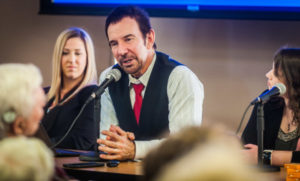
Product testers are fit with the newest hearing aids on the market and asked to wear these hearing aids in their own listening environments. At the end of this testing period they complete our hearing aid report card and discuss those findings at our monthly meetings. The hearing aids that receive top rankings are those that are recommended in our clinic.
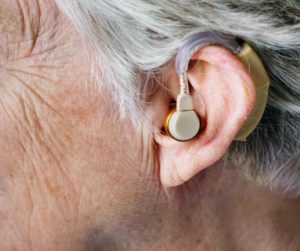
In 1985, Dr. Ron Levitt founded The Oregon Association for Better Hearing, a hearing aid consumer test group. That group was established so that people who are hard of hearing could talk with unbiased, long-time hearing aid users. These hearing aid testers volunteer their time to evaluate hearing aids in an ongoing search to find the best hearing aids in the world marketplace. The hearing aids that receive top rankings are those recommended and fit on patients at Dr. Leavitt’s clinic in Corvallis, Oregon.
Since 1988 this group has educated thousands of potential hearing aid buyers. None of the product testers have any affiliation with any hearing aid sales or manufacturing organizations. None receive hearing aid manufacturer sponsorship or compensation in any form. As such, their hearing aid ratings are unbiased.
This is just what we do and who we are.
Let us know if we can help you or answer any questions you might have about hearing or The Oregon Association for Better Hearing!
541-754-1377
What’s up for Seniors?!
Corvallis area seniors are active and busy and it shows! You can see what’s shakin by visiting the Chinimini Senior and Community Center or by clicking on the link below! Make sure you sign up for the news letter so you don’t miss a thing!

Activities For Seniors
You will be amazed at what is available and going on with the young at heart crowd here in our community! They are not slowing down, they are picking up speed! You can try any number of great activities including…
|
|
|
|
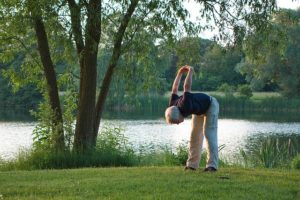
We know you are going to want to check it out and try something new or rediscover something old! What a great community to be a part of! Keep on growing and learning and discovering life is beautiful! The adventure is just getting started!
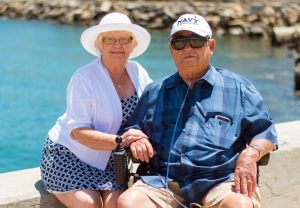
Corvallis Hearing Center proudly serves the senior community and has an abundance of resources to make this season of life full and rich! Don’t miss out on life by not being able to hear to your full potential! We are passionate about making your hearing and quality of life be the best that it can be! Make an appointment today and let us serve you in any way we can! Here is a link to our contact information!